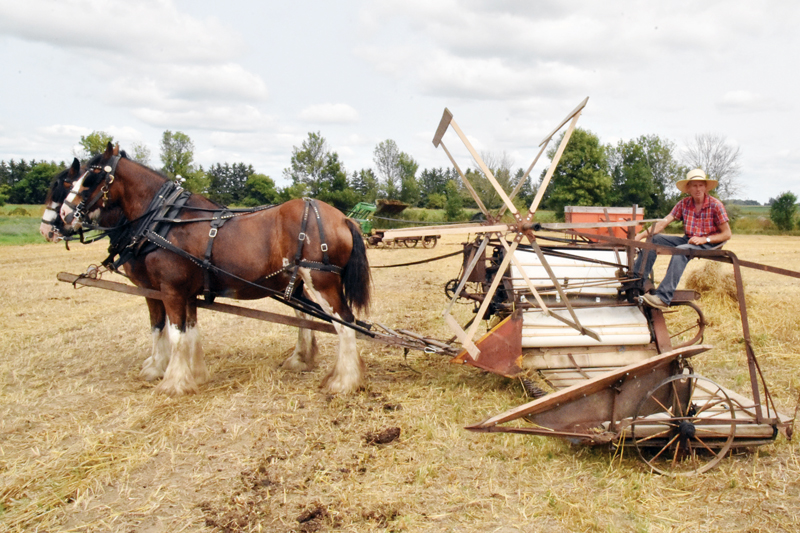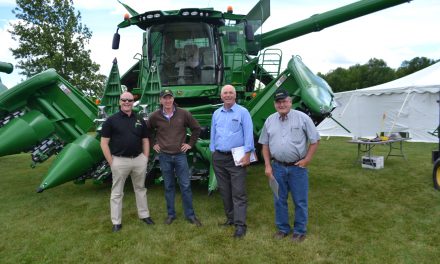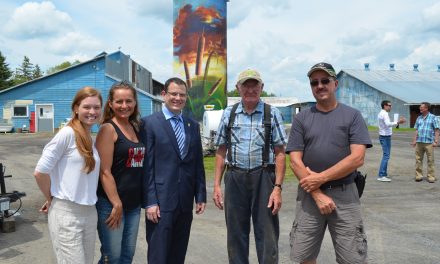Oat binder
The owner of Bri-McFarm, Brian McIntosh demonstrates the cutting of his oat field using a 1946 horse drawn seven-foot binder. It was a part of a threshing display on the weekend of Aug. 18-19. Moore photo

As part of the demonstration, there was a threshing gang of all ages as they threshed the oats after they were cut, bound, stooked and picked up. The thresher separated the oats from the straw and then bagged and piled. Moore photo
by Jeff Moore
AgriNews Staff Writer
INKERMAN–Brian McIntosh from Bri-McFarms near Inkerman hosted a demonstration of our forefathers on Aug., 19 and 20, as he, along with the Leeds County Draft Horse Club as they cut, stooked and threshed oats. McIntosh also owns a ostrich farm and he also has the area’s only zebra.
It worked out well with the South Mountain Fair being so close, it allowed fair goers to take a trip down memory lane or for youth to see how farming was done even less than a century prior.
When the AgriNews had first seen McIntosh he was on a 1946 McCormick Deering seven-foot grain binder. This machine was drawn by two draft horses and it cut the oats and tied them in little bundles. During the evening of Friday night a group of enthusiasts gathered the bundles and stooked them with about 15 to 20 bundles in a stook.
On Saturday morning, horse drawn wagons went around picking up the stooks piling them on the wagons. The wagons were then pulled up to a thresher where volunteers happily forked the bundles into the thresher.
The threshing machine pulled the bound bundles as they were forked onto the entry tray. The machine then separated the oats from the straw and were run through a sieve with holes drilled in the metal just slightly bigger than a grain of oats.
The chaff was removed and an auger carried the oats to the bagger. The bags were filled, tied and stacked. The machine was powered by an antique Case tractor with a big roller where there was about a 25ft belt was meshed with another roller on the thresher.
The straw was blown out the back of the thresher making a big pile which would be baled (by a recant baler) at a later time. The only way to bale the straw that could be baled was to throw it by hand into the baler explained McIntosh. “There is only one way to bale the straw and it will require a lot of work.”
In another part of the display there was a horse drawn manure spreader. When the all metal wheels were rotating, the attached gears ran the table chain on the manure spreader’s floor and also ran the beaters to spread the manure.
There was a seat and a gear shift on the front of the spreader. There were also horse drawn wagon rides for the visitors. All in all it was a fabulous trip back in time.













